How to Choose Your First Surfboard When You Graduate from a Foamie
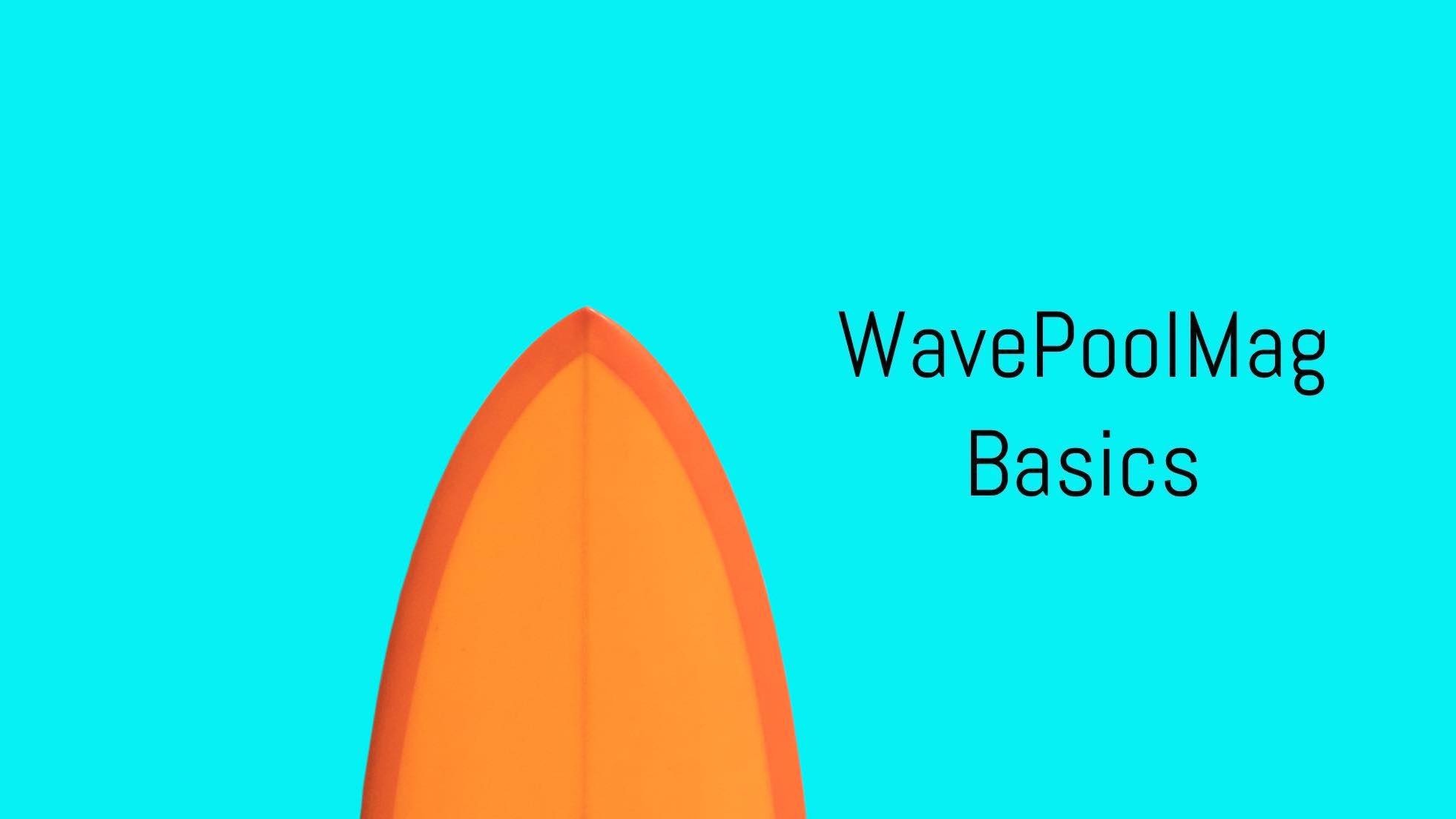
You’ve mastered the pop-up and that foam rental – now it’s time for your first surfboard. A mini-mal is a great idea as is a mid-length. Both range in size between 7’0″ and 8’10” – perfect as you’ll need enough floatation to paddle but not so much that it’s hard to turn the board.
WavePoolMag Basics is an ongoing series providing essential surf gear information to those new to the wave pool, and surfing. This article covers surfboard design, materials, models and purchasing options. Let’s read on!
So, you’ve been having fun playing around on your soft board and you are feeling pretty confident with your pop-up. You can control the board well enough to surf in a crowd and you want to try intermediate sessions in the pool.
You’ve decided, “hey, this whole surfing thing might be for me.”
It’s time to take your surfing to the next level and graduate from the foamie to your first real fiberglass board. Getting that first board is a milestone moment in any surfer’s life. Cherish it. You’ll never forget that board.
But there’s one problem. There are so many options. It can be overwhelming. What shape should I get? What fins? What tail should my board have? There are different types of foam? The list goes on.
Let’s take a dive into “buying your first surfboard 101” to help you make an informed decision. These are the questions you should ask yourself when looking for that magical first board.
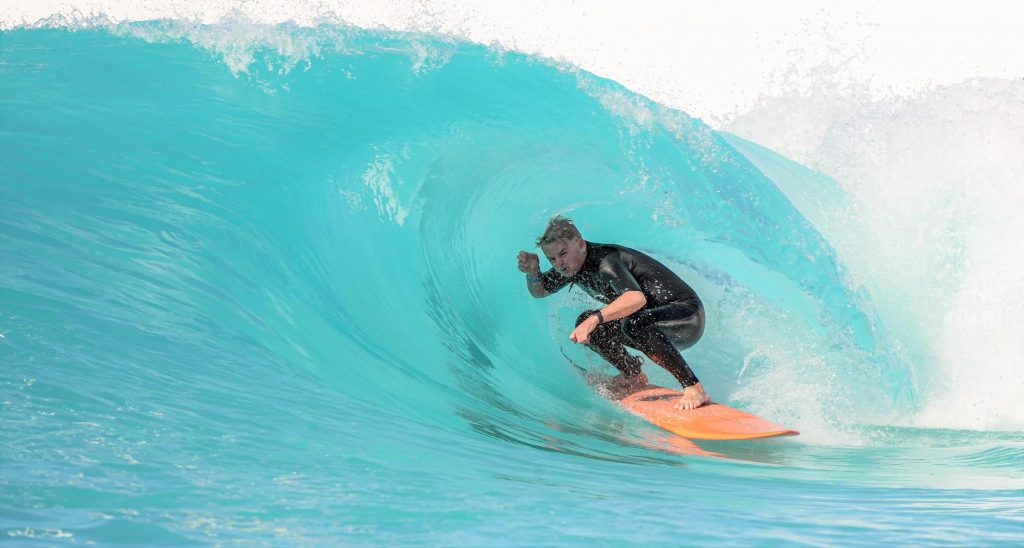
But first, a crash course in design theory
Basic design theory is that the more surface area a board has, the faster it will go. All that area coming into contact with the water makes for more glide. Alternatively, the less area a board has, the slower it goes, but the more maneuverable it is. So a SUP is the fastest board around, but you don’t always need to go that fast. And, one of the most fun things in surfing is being able to do a nice turn, all that extra surface area makes it harder to slice into a nice cutback. So you need to find a perfect balance. Here’s the thing, as you progress, that balance between speed and manoeuvrability changes.
A common beginner mistake is transitioning to a board with too little volume too quickly, which can make the learning curve more steep and the whole experience more frustrating.
Volume
You’ll hear shop people talk about Cubic Liters, or volume, in a surfboard. This is a measurement that tells you how much flotation the board has.
Many beginner surfers get infatuated with the length, width, and thickness, but that doesn’t tell the whole story. Knowing how much volume the board has and where the cubic liters are distributed within the board will tell you a lot about how it will ride.
Think about it this way. Imagine you filled up your bathtub with 100 liters of water. If you put a 30-liter surfboard in the tub and submerged it, the bathtub water level would rise to a level of 130 liters because the board displaces the water equal to its volume.
Volume is your friend when you are learning to surf, allowing your board to sit higher out of the water. Extra liters in your board will make paddling easier and create an overall sense of greater stability.
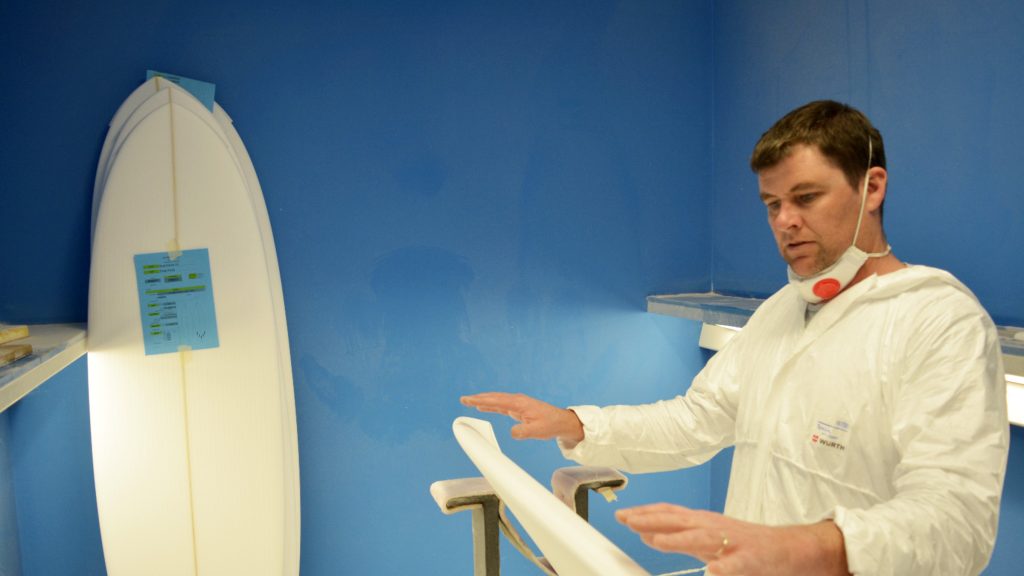
Design Components
As you’ve probably discovered on your search for a board, there are a lot of design intricacies that go into shaping a surfboard: Rails, concave, rocker, and template curve all affect performance.
For example, rounded ‘soft’ rails will make for more loose surfing and provide more volume, while ‘hard’ rails with a sharp edge will provide more hold. On many boards, you may notice that the rails transition from hard to soft as you run your hand from tail to nose.
Concave is an inward curve in the bottom of the board that provides speed and lift. Imagine, instead of drawing a straight line from point A to B across each rail, the board curves inward and increases the distance from rail to rail, therefore creating more surface area. It also helps reduce water resistance by channeling water directly under the board and out the tail.
Rocker is the bottom curve of the board running from tail to nose. Less rocker, aka a flatter board, will allow more of the board’s surface area to touch the water surface and create more speed, but too little rocker can be detrimental to maneuvers. More rocker will slow down the board, but be more maneuverable.
Rocker can be placed at both the nose and tail of the board. The nose rocker, in the front, is typically greater than the tail rocker, in the back. A greater nose rocker will prevent the board from poking or pearling on takeoff, but as mentioned, will make the board slower. Tail rocker serves the same purpose – more maneuverability. Just as with nose rocker, more tail rocker will slow the board down as less surface area of the board will be in contact with the wave.
And finally, the template curve of a board is the journey the contour of the board takes from nose to tail. Generally, the more curve in an outline, the sharper a board will turn. When a board’s outline is straight, there is no pivot point from which to initiate turns. To visualize, tip your iPhone on its side and try to roll it back and forth between your fingers. Now try the same thing with a coffee mug – the curve of the cup helps it roll back and forth much easier than the smartphone.
The Secret Sauce
How a shaper mixes and matches all these design components is ultimately what makes a board come to life. Each and every detail serves its purpose. However, how this recipe of design features work in relation to your ability is what makes a great board. To choose the right combination of components you need a little education.
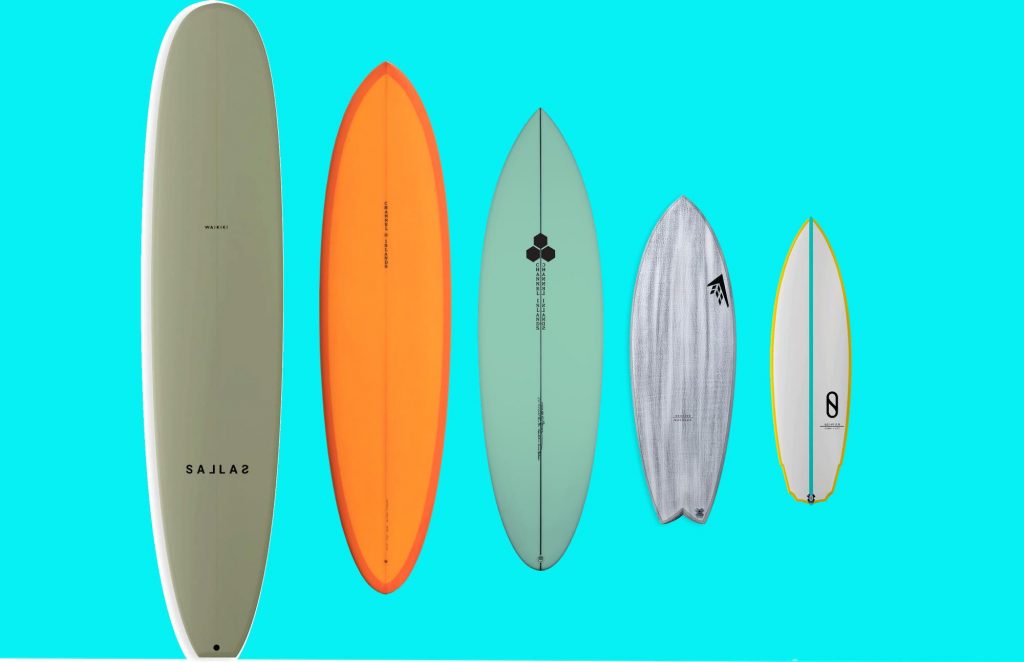
Surfboard Shape
As you’ve noticed, there are endless different surfboard shapes – long, short, skinny, wide, fat, pointy, and round. What is right for you? The answer to that question begins with a few questions you should ask yourself.
What type of surfing do you like to do? What type of waves do you like to ride? What type of surfer do you want to become?
Longboards & Mini-Mals
Do you like the cruisy, stylish feel of riding a long, mellow wave? Does your local wave pool offer a mellow wave option? If you answered yes to at least one of those questions, maybe you are a longboarder.
A longboard is a board generally at least 9 feet in length, with “mini-mals” running from just under 9 feet on down to 7’6″. The abundant surface area allows you to paddle faster, get into waves early, walk up and down the board, and even get your toes on the nose when you’re ready.
Mini-mals are a favorite because they provide the stability of a longboard, but aren’t so cumbersome that turning on the wave becomes difficult. For decades this was the go-to design when surfers graduated to their first hardboard. They float, paddle easily and turn sharper than a 9 or 10 foot board.
But longboards are a wonderful option as well. Within the family of longboards there is a spectrum of shapes, too. A more performance longboard will have less volume, and a more drawn-in tail to allow for easier change of direction.
A noserider will have more volume, particularly up towards the nose, that will make it easier to walk the board and transfer your center of gravity closer to the nose of the board.
And then there is everything in between that draws on aspects of both styles. (again the mini-mal.)
Wave pools are a great place to progress through different wave settings and the shortboards that work best in those conditions.
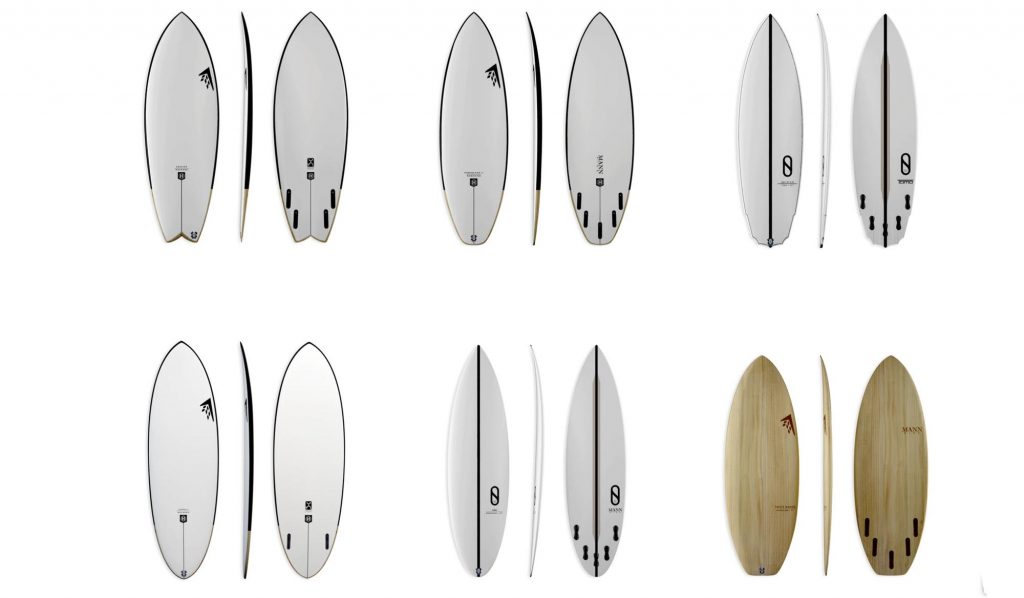
Shortboards
Do you enjoy the more radical side of surfing and eventually want to work your way up to surf powerful, challenging waves? Do the waves that you have at your disposal provide enough “umph” to carry a smaller board? If so, maybe a shortboard is for you. Wave pools are a great place to progress through different wave settings and the shortboards that work best in those conditions.
Transitioning from a foamie to a shortboard will feel extreme as far as the loss of paddle power and lack of stability when you do your pop up and go down the line. That said, when transitioning to a shortboard, don’t forget that volume is your friend. Volume will help you catch waves, and catching waves is the name of the game.
A common beginner mistake is transitioning to a board with too little volume too quickly, which can make the learning curve more steep and the whole experience more frustrating.
A fatter shortboard with more volume throughout will give you more paddle power and stability. A standard shortboard length for an advanced surfer is typically an inch or two less than their height. So try to go a few inches longer, or look for a shape that has some added liters of volume.
Most surfers transitioning from the foamie to the hard board are not ready for a shortboard, but there definitely are some talented surfers who need something that will keep up with their progression. A shortboard could be the call.
In a wave pool setting, where positioning and paddle power aren’t as crucial compared to ocean surfing, a shortboard shape makes sense.
Mid-lengths
Maybe you aren’t into longboarding, and you don’t think you are skilled enough to surf on a shortboard yet. You want something in the middle. You might be a good candidate for a mid-length.
A mid-length is generally between 6.5 and 8 feet in length. You could think of it as a shortboard on steroids, with a more ‘full’ outline.
A mid-length will provide crucial paddle power, with enough maneuverability to make a beginner happy as they progress to bottom turning and changing direction on the wave.
This is one of the most common board types for a beginner surfer. It’s a more forgiving board as far as stability, but it will stick with you as you improve and work your way down to smaller boards.
Harley Ingleby rides many different types of boards. His style of surfing illustrates how any board, twin, mid-length, longboard, etc.) can be fun in the pool.
Fish
For the same reasons that you might buy a mid-length, a fish might be attractive to you as well.
A fish is a small, more compact board, typically surfed several inches shorter than a shortboard. However, a fish contains loads more volume and surface area than your average shortboard, which, like the mid-length, provides more stability and paddle power.
A fish provides a great runway to transition to a shortboard, or maybe you’ll discover that you are a fish surfer for life. Many advanced surfers keep a fish in their quiver for smaller, or weaker conditions, given that the increased volume allows it to hold speed better through flat sections of a wave.
Again, we can’t stress enough that volume is your friend, so err on the bigger side when choosing length and volume on your first fish.
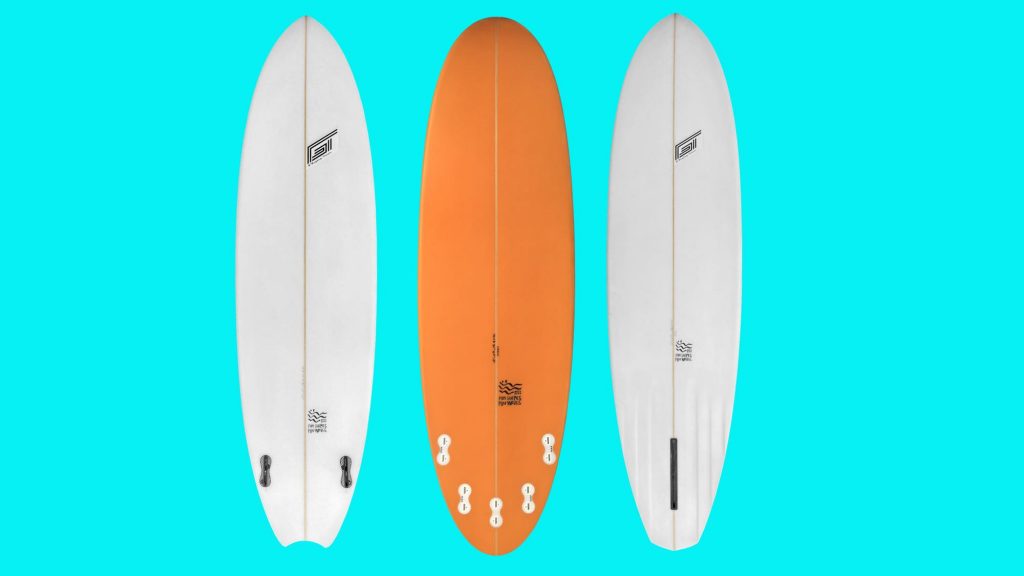
Number of Fins
Congrats. You’ve selected the shape you want. Now you are looking at the bottom of the board and scratching your head at all the different fin setups.
The reality is a beginner surfer probably won’t be able to feel much of a difference between the number of fins on the bottom of the board. But as they progress, they’ll begin to notice the subtleties of each fin arrangement and how they affect their surfing.
Thruster (three fins)
The thruster fin setup is the most common that you will see across all types of surfboards. The three, equally-sized fins create greater hold and stability in the wave, giving the rider more control through maneuvers.
The added stability sacrifices a bit of speed, as the three fins create more drag on the water. A thruster is a safe bet for your first board and a good call for wave pool surfing where the surf is consistently good.
Twin fin and quad
The twin fin and quad setups are similar in that they don’t use a center fin, allowing for water to freely pass directly under the board without any drag in the middle. That increases speed.
A twin fin will provide more control of maneuvers, when compared to a single fin, and the added fins of a quad (four fin) setup provide even more control than the twin fin.
Twins and quads bode well for fish shapes, and it’s not uncommon to see quads used on shortboards and mid-lengths as well.
Single fin
With fewer fins dragging under the board, the single fin setup is fast. But that speed provided by one fin comes at a price, providing less stability and performance potential.
Single fins are most commonly seen on longboards, particularly nose riders that favor speed going down the line over maneuverability.
Having declined in popularity since their heyday in the ‘70s, some people still enjoy riding the feel of a single fin setup on their mid-length shapes, but you’ll almost never see this arrangement on a modern-day shortboard or fish.
2 + 1
A 2 + 1 fin setup uses a longboard fin in the middle, with two smaller thruster fins on the sides.
Compared to the single fin, the additional side fins add more control and drive, especially when putting the board on rail.

The Tail
While you are browsing through board shapes, you will notice that the tails substantially vary across boards.
The shape of the tail will determine a lot about the performance and capabilities of the board, so much so that it deserves its own section.
Pin
A pin tail is when the rails draw in on the tail and meet at a point.
A pin provides greater hold on the wave, particularly preferred by surfers who want a board that can remain stable in big waves and barrels. However, it will feel relatively more rigid as you transition your weight from one rail to the other during a maneuver.
Another style of the pin is a rounded pin, which is a more gradual, less extreme version of the pin. This gives up a little hold for slightly more maneuverability.
Squash
A squash tail looks more or less like a square at the back, with a portion of the tail running perpendicular to the rails.
The squash is one of the most popular tail shapes in modern surfing; The extra volume at the tail makes it loose and more apt to perform maneuvers. The looser feel will sacrifice a bit of hold that a pin provides.
A squash is a safe bet for surfers getting their first shortboard who want something that can work in all conditions, from small waves, to big waves, from the ocean to wave pools. A squash also leaves plenty of room to allow a surfer to progress and experiment with maneuvers.
Swallow tail
The swallow tail is a happy middle ground between the squash and pin.
A swallow still has considerable volume in the tail for looser surfing, but also provides more hold than a squash as the board channels water between the tail’s two points.
Many surfers opt for the swallow tail on a range of boards, from shortboards, to fishes, to mid-lengths.
Other tail shapes
Along with most common tail shapes, pins, squashes and swallows, you’re likely to find bat tails, diamond tails, round tails and even asymetrical tails. Each has subtle affects on a surfboard’s performance.
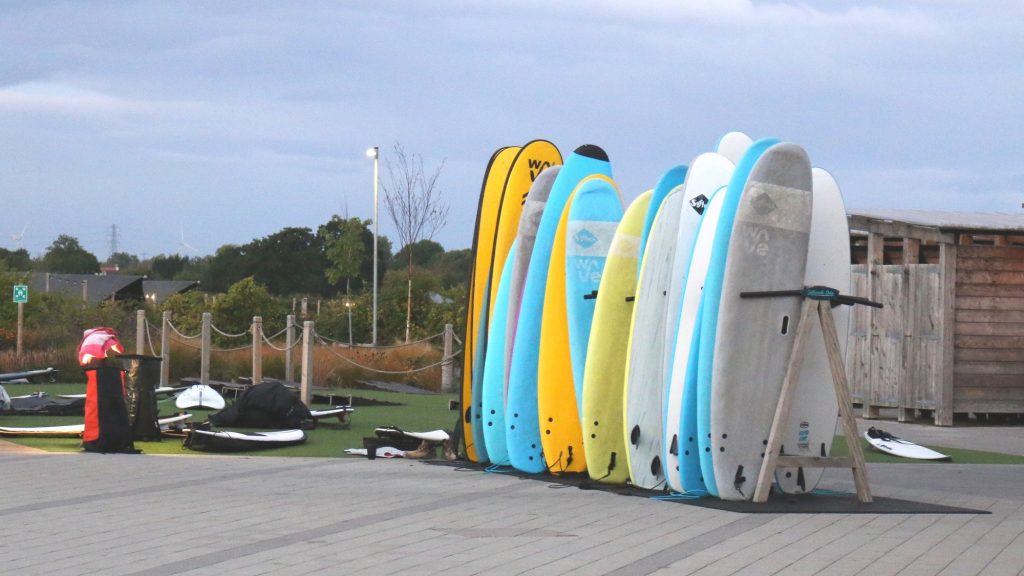
Construction materials: Epoxy vs polyurethane
Inside every surfboard is a hunk of foam that is shaped to the desired dimensions and then wrapped in fiberglass and coated in resin to make the finished product.
The type of foam at the core of the board will change its characteristics in the water.
Polyurethane (also known as PU) is the traditional foam used in surfboards. It is relatively denser, heavier, and more flexible. It’s what boardmakers have been using for 60 years.
On the other hand, epoxy foam, which was introduced to surfing in the ‘90s, is lighter, less dense, and more rigid. Many surfers prefer the light, weightless feel of how an epoxy board rides ‘higher’ on the water, perfect for creating speed. Most wave-pool-focused equipment is built using epoxy construction.
On the other hand, some surfers prefer the flex and weight of the PU foam, especially in choppy or windy conditions when a lighter board would have a hard time negotiating the bump.
Whichever you choose, an epoxy board will typically cost you an additional USD $100, at least, when compared to a similar PU board.
Buying Your First Surfboard
Assuming you don’t have an unlimited budget, price is also a factor when selecting your first board. As you scan the board rack you will notice that there is a large gap between the cheapest and most expensive boards and you need to find out where you fit on the spectrum.
The first thing to decide is new vs used. Just like driving a new car off the lot, the second you take that new board out into the water and give it its first pressure ding, it will lose value. If a brand new board is within your budget and you find the perfect board, there’s no shame in shelling out the cash for something that will lead to loads of fun in the wave pool and the ocean.
But if you are unsure about what board you want, want to experiment with different shapes, or are budget conscious, a used board could be a practical, economic option. And many wave pools have demo fleets of brands like Firewire or LibTech, so you can rent one and try it out first.
When buying used, you need to check for a few things.
1) Are all dings repaired and water-tight? A ding that lets on water could make your new purchase become more expensive than you thought and a pain in the behind.
2) Is the board yellowed? Boards that have been exposed to lots of sun or heat will turn yellow over time. It’s not a big deal and, in theory, doesn’t affect the structural integrity of the board, but a board that is very yellow is either very old or has not been stored properly. Make sure the board is priced accordingly.
3) Is there any delamination? Delamination is when the fiberglass starts to detach from the foam. You’ll notice because you will be able to push in on the board with your hand. While a surfboard with delamination can be salvaged, it usually indicates that the board is near the end of its life. Beware.
Another thing that will affect the price is if you are buying a brand-name board or a board from a lesser-known shaper. In theory, you can find the perfect board in either category.
Brand name boards, like Lost, Firewire, Pyzel, Haydenshapes, and Channel Islands, to name a few, obviously receive more hype and are ridden by the best surfers in the world. The pro of these boards is a general guarantee that you are receiving a quality product with a shape that has been tried and tested by the masses. Also, a brand name board will hold resale value well as there is a large market for second-hand boards from a top brand.
However, you can save some money by getting a board from a smaller-scale shaper, who most certainly will have a lower sticker price than the top brands. There may be a little more risk as far as the quality assurance of the product, but do a little customer research within your local surfing community to make sure they have a good reputation. You may find that your local shaper can make your dream board custom, or that he/she already shapes what you want.
Don’t forget the goal: To have fun
Now you are ready to make your selection and jump in the pool. When selecting your first surfboard, don’t forget to prioritize maximizing your time riding waves.
What do we mean by that? Get a surfboard that is within your skill level and will allow you to catch lots of waves.
The only way to get better is by logging time standing on the board, so if you get ahead of yourself and pick a board that is too difficult for you, you won’t find yourself improving as fast as you might have hoped. And, of course, A wave pool is a great way to log lots of wave time!
Related Coverage
